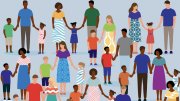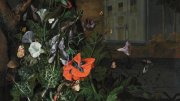For many people, the most significant impact of the COVID-19 pandemic was the sheer weight of isolation: the abrupt absence of routine social interaction with fellow human beings, from relatives to work colleagues, classmates to cashiers.
Being alone leads to more than just boredom or the blues; last year, U.S. Surgeon General Vivek Murthy ’98 issued a formal advisory warning that social isolation increases risk of premature death by 29 percent, calling it “as dangerous as smoking 15 cigarettes a day.” In contrast, being well-connected with others is associated with longer life and better physical and mental health. “Social connection is a fundamental human need,” the advisory emphasized, “as essential to survival as food [and] water.”
Why is the company of others so essential, and what drives animals to pursue it? This is the type of question that Morris University Professor Catherine Dulac, a neuroscientist, has been researching for years, exploring how brain circuitry propels instinctive social behaviors.
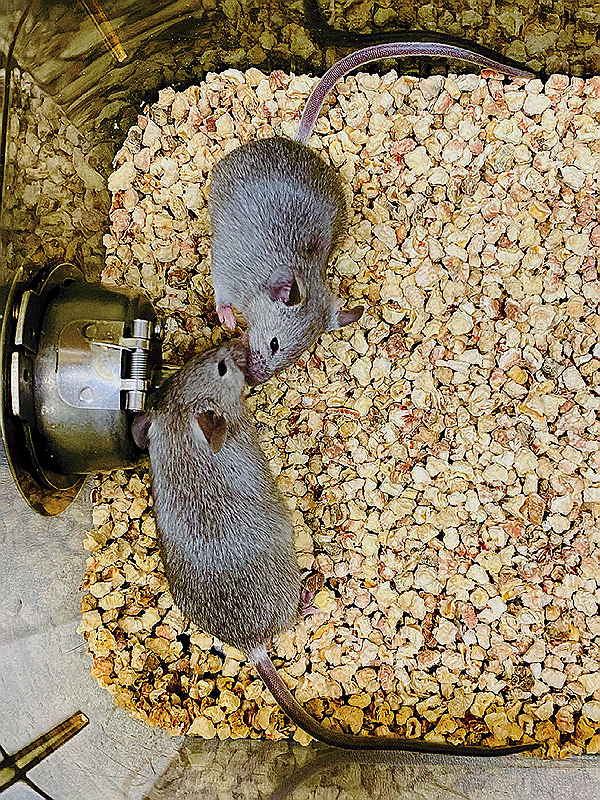
Dulac found previously unidentified brain circuits in mice that activate when they are alone, driving them to seek out fellow mice. She and her colleagues observed that if they isolated a mouse from its cage mates for several days and then returned it to the group, the solo mouse was drawn to the others like a magnet, sniffing and rubbing noses with them and grooming their fur. The longer the isolation, the more enthusiastic its grooming and nuzzling of other mice. That proportionality suggests something important, says Dulac, a Howard Hughes Medical Institute investigator. “It’s a telltale sign of a homeostatic need,” she explains, “like the need for food, the need for water, the need for sleep.” The longer animals, including humans, have been without food or water, for example, the more the brain pushes them to eat or drink to achieve a healthy, balanced state of homeostasis that promotes survival.
Why are animals, including humans, compelled toward one another? “There are a lot of advantages,” Dulac says, “to being together.”
Dulac’s experiments illustrate in vivid detail the deeply ingrained, genetic basis for connection and social interaction. Why are animals, including humans, compelled toward one another? “There are a lot of advantages,” she says, “to being together.”
The Social Lives of Mice
Dulac has long been fascinated by social behavior. “Social stimuli are the most salient stimuli that exist for any animal,” she says. “We are drawn to others of our species. Any animal, seeing another animal of their own species, finds it the most interesting thing possible.”
Early in her career, Dulac studied the vomeronasal organ (VNO), a set of neurons in the nasal septa of animals, which express receptors sensing pheromones, chemical messengers that trigger social responses such as mating and aggression. While working as a postdoctoral researcher in the Columbia University lab of Richard Axel (who later received a Nobel Prize for his work on the olfactory system), she identified the first group of genes that encode pheromone receptors in the vomeronasal system.
Later, at Harvard, Dulac’s lab group identified neuronal circuits in mice that dictate male- and female-specific behaviors (see “When Mickey Turns Minnie,” March-April 2008, page 14). When males mate with females, they emit ultrasonic vocalizations to attract them, but in the absence of a functioning VNO, they began to behave this way in the presence of both males and females. Another set of experiments focused on parental behaviors in mice. Virgin male mice will typically kill the newborn mice of other males, but when the researchers removed the VNOs of male mice, they suddenly acted like females: they built nests for baby mice, groomed them, and crouched near them protectively (see “The Mr. Mom Switch,” May-June 2015, page 11). The scientists also found that, when certain neurons in the brains of male and female mice were removed, virgin female mice became as infanticidal toward baby mice as virgin males. The findings suggested that both males and females possess brain circuits that drive both nurturing behavior and aggression.
A few years before the COVID-19 pandemic, Dulac’s lab began exploring the neuronal circuits that underlie how mice respond to social isolation. This is a topic that has intrigued Dulac for a long time: roughly 20 years earlier, she had attended a talk in which a scientist shared findings showing that isolation harms animal health. “Female rats that were kept isolated had this absolutely enormous increase in the prevalence of cancer,” she remembers. “I thought that was mesmerizing,” given that there was nothing obvious about a lack of cage mates that would increase cancer risk. Dulac also encountered data showing that mice and dozens of other species face an increased risk of disease and cognitive problems when isolated.
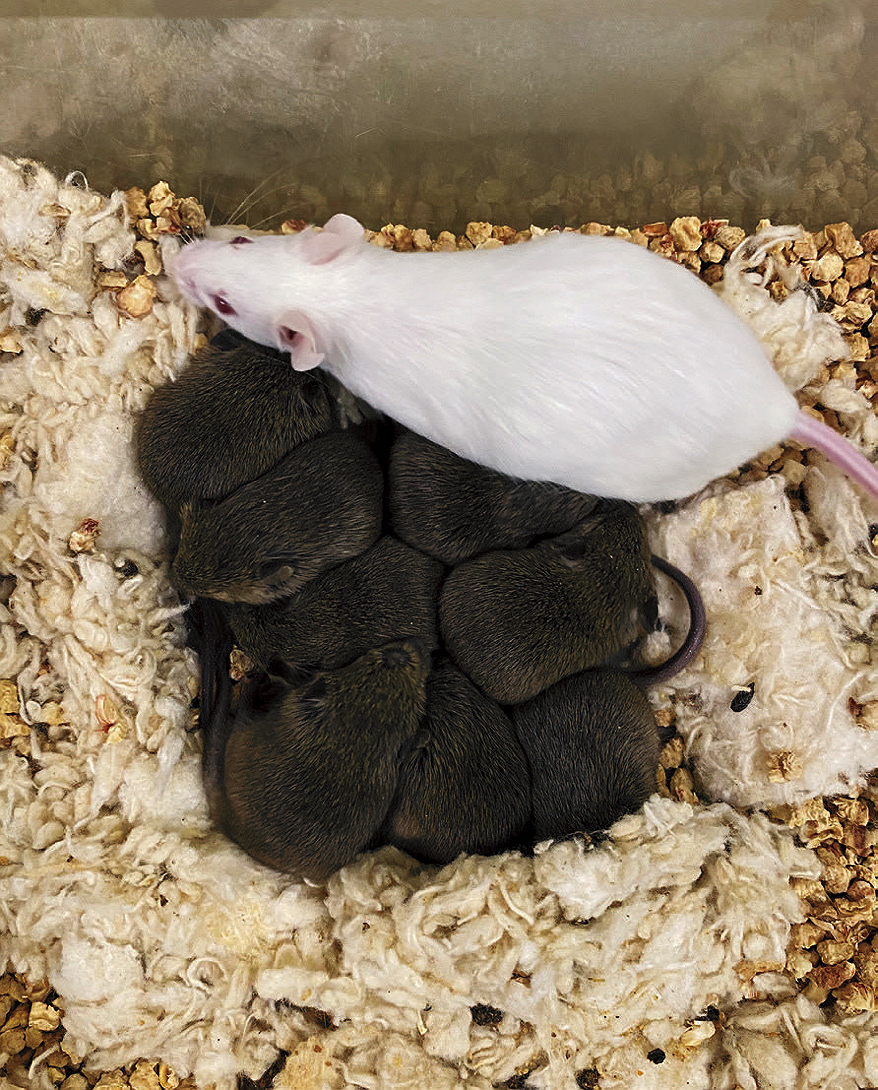
Ding Liu, a postdoctoral researcher in her lab, began to look at other scientists’ studies of isolation, which first identified that pattern: exaggerated socializing behaviors after mice were isolated, which grew more pronounced the longer the mice had been alone. “Somewhere in this area of the brain there might be a bean counter of social interaction,” Dulac says. “When the animal is isolated, the bean counter says, ‘Hey, something is missing here. You need to find partners.’ And when the social encounter occurs, then the bean counter says, ‘We’re okay now.’”
Living with others likely promotes survival, she adds. “It’s good to be with others because it brings protection against predators and the ability to do collective tasks like parenting or foraging.”
Isolating the “Isolation Neurons”
Using a cellular atlas of one part of the brain (the preoptic area of the hypothalamus) that Dulac previously created with Arnold professor of science Xiaowei Zhuang, Dulac and Liu began a series of experiments to pinpoint which neurons play a role in social need. They focused on the hypothalamus, a small, cone-shaped structure known to play a role in homeostasis. And they chose to study female mice, avoiding the potential complications of mating and aggressive behaviors seen in male interactions with other mice.
On a recent afternoon in her office in the Biological Labs building in Cambridge, Dulac played a video showing a white mouse wandering around an enclosure, a miniature microscope mounted to its head. The microscope lens was focused on the hypothalamus, deep in the brain, allowing researchers to monitor neurons there with a technique known as microendoscopic calcium imaging. Each neuron expresses a calcium indicator as it fires, causing it to give off a trackable, fluorescent glow.
As the mouse moved around the space, line graphs on one side of the screen tracked three clusters of neurons in the hypothalamus. A yellow and a purple line remained relatively flat, while a green line showed a series of sharp peaks as the mouse remained solitary. This green line indicated the activity of what Dulac and her team termed “isolation neurons,” which are activated when mice are alone, and that the researchers theorize drive a mouse to seek out others. Interestingly, in another experiment, the team used a technology to activate those isolation neurons—and the mice subsequently avoided the space where the activation took place, suggesting that they had a negative association with the isolated state.
On Dulac’s screen, the recording showed a researcher quickly slipping another mouse into the enclosure. The new mouse, Dulac said, had been living in a group and was a former cage mate of the solo mouse. “Because the mouse with the microscope has been isolated for several days, it is really eager to interact,” she said. Indeed, it chased the new mouse in a flurry of sniffing, attempting to make head-to-head contact and rub noses.
As soon as the new mouse entered the space, the graph on the side of the screen changed. The green line, indicating activity in the isolation neurons, began to fall, suggesting that those neurons were now suppressed. The previously flat yellow line climbed steeply, and the purple line rose as well. The researchers labeled the purple and yellow neurons “reunion neurons,” and their increase in activity, Dulac says, suggests the mouse’s need for social interaction is being fulfilled.
The Appeal of American Science
Studying how individuals interact is fitting work for a neuroscientist described by her postdoctoral adviser Richard Axel as “deeply human and thoughtful.”
Dulac, 61, grew up in Montpellier, in southern France near the Mediterranean Sea. Her parents were humanities scholars: her mother studied medieval poetry, and her father focused on the eighteenth-century philosopher Diderot. Dulac was an avid reader—she especially loved novels and poetry—but her parents nudged her toward a career in science, in part because their students sometimes struggled to find jobs. “They had a sense,” Dulac says, “that the scientific disciplines had way more opportunities.”
She completed her doctorate in developmental biology in the Paris lab of Nicole Le Douarin, where she studied the progeny of the neural crest, a group of embryonic cells in vertebrates that develop into many different cell types and structures in the body, including parts of the peripheral nervous system, pigment cells, and craniofacial bones. That work sparked her interest in the diversity of cell types in the nervous system.
When her doctorate was complete, she faced a critical decision: to pursue postdoctoral work in France or in the United States. “I love France, and there were very few people who went overseas for a postdoc,” she says. “But I was fascinated by how successful the American sciences were, and I really thought there would be something for me to learn there. I wanted to get out of my comfort zone.”
When she accepted the position in New York, in Axel’s lab, Dulac remembers experiencing some culture shock. “The social interaction was very, very different,” she remembers, observing that Americans often lacked close, long-lasting friendships; spouses or partners often filled that role instead. Dulac had many deep friendships with people in France, and she missed sitting down with them and family members for dinners and weekend lunches.
Axel says Dulac brought elan to the lab. “Catherine is a scientist who really takes a great deal of joy in the doing of science,” he says. “She takes great pleasure in the generation of knowledge, in finding things out. Science for her is not a means to an end, but rather an end unto itself.”
Dulac intended to return to France once her postdoctoral fellowship was complete. But “the French system is still quite hierarchical. As a young person, you can’t start your own independent lab, or if you do, it’s very tiny,” she says. The resources of the American system were appealing, and Dulac accepted an assistant professor position at Harvard in 1996.
Her perception of her work had been evolving. Dulac says she was initially drawn to science for the rigor. But over time, she says, “I came to understand that I could actually do science on things that I found super interesting for me as a human being.”
Sociable Mice—and the Importance of Touch
Not all mice possess an equal drive to interact with others. Although most mice did display rebound behavior after being alone, Dulac and Liu observed that different mouse strains needed varying levels of social contact following isolation. The type of mouse used most frequently in their lab displayed moderate levels of sniffing and head-to-head contact after being alone, while other strains displayed few of these behaviors when reunited with cage mates. But another mouse strain, known to scientists by the initials FVB/NJ, was especially social. Of six mouse strains studied, these mice engaged in the most enthusiastic socializing post-isolation.
One of the central questions of this work is how a mouse brain senses that it is alone or with others. The extra-social mouse happens to develop a progressive form of blindness, and the researchers wondered if the lack of sight might make these mice seek the company of fellow mice. Dulac’s team explored this question using two more mouse strains: a type of mouse bred to experience the same retinal degeneration as the gregarious FVB/NJ mice, and FVB/NJ mice that had been genetically modified to correct their vision loss. In both cases, Dulac explains, the mice experienced the same social rebound as the original mice, which indicates that sight was not essential in alerting mice to the presence of others.
This led the team to explore other senses. They separated mice from their siblings with a perforated divider that allowed them to continue to hear and smell each other. But this changed nothing; when the mice were reunited, they sniffed and nuzzled as if they had been entirely separate. Next, scientists wondered about the role of pheromones, so they observed mice bred without pheromone-sensing ability and found that they engaged in the same rebound behavior as typical mice. This left the possibility that the answer lay with the sense of touch.
To test this, Liu devised “an ingenious approach,” according to Dulac. He created what he wryly called “the mouse version of the Harlow experiment.” In that historic and controversial experiment, baby rhesus monkeys were given a choice between taking food and water from a wire structure (nicknamed “the wire mother”) or receiving comfort from a soft cloth structure (“the cloth mother”) with no food or water. The monkeys overwhelmingly chose soft comfort over the wire mother, even though that structure provided sustenance.
To study this phenomenon in mice, Liu used a type of tunnel typically added to mouse cages to provide the animals with interesting stimuli. He lined one tunnel with soft fabric but left the second tunnel in its original “naked” state. The soft tunnel seemed to provide solo mice with the contact they needed. “If you take mice that are housed together and you give them the choice between the naked tunnel or the cloth tunnel, they go to one or the other by chance,” Dulac says. “But if the mouse has been isolated, it will go to the cloth tunnel with very high preference.”
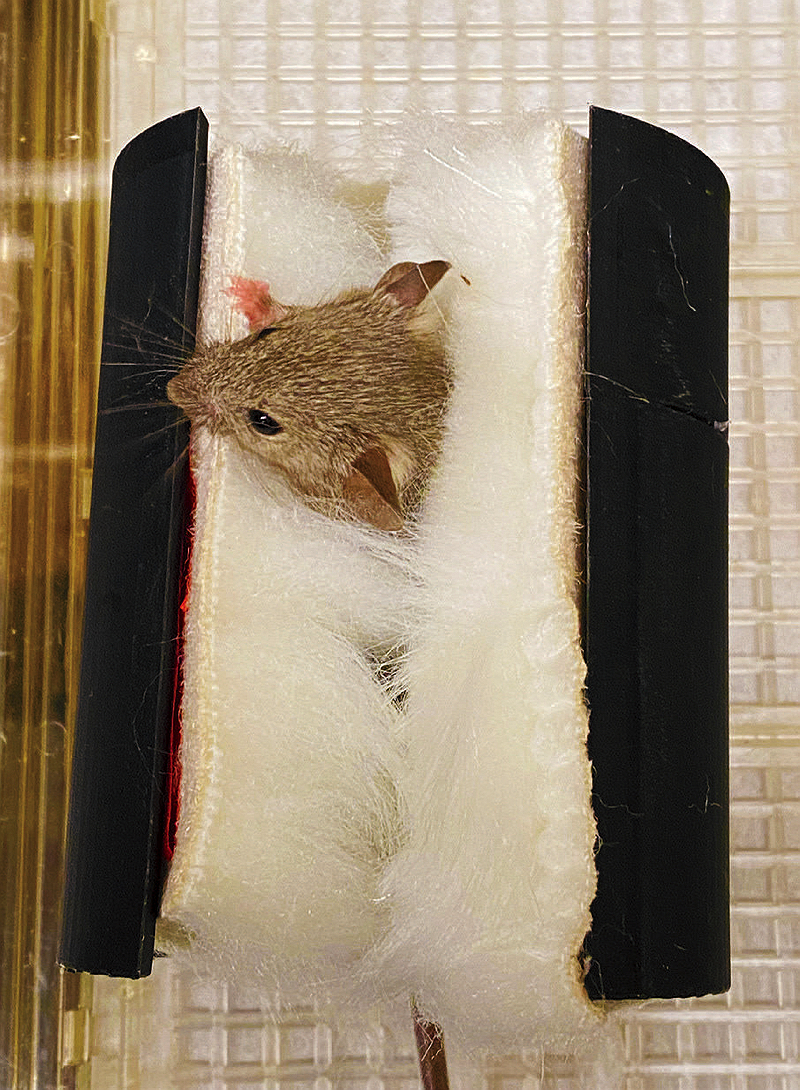
The researchers strengthened the evidence further when they observed that mutant mice—bred without the ability to sense soft touch—did not exhibit rebound behavior. “Apparently touch is really critical,” Dulac explains; it not only helps animals sense that they are alone but is also necessary for them to achieve a satiated state after isolation.
She adds that the varying levels of social rebound found in different mouse strains might mirror differences in human levels of social need. “When I give a talk, I often have the following question [related to the] pandemic,” Dulac says. “People will say, ‘I know a lot of people who suffered to be by themselves, but I was so happy. Am I wrong?’” She reassures them that both mice and humans are very heterogenous. “Some people are going to thrive when they are with others,” she says, “and some people are going to thrive when they’re not with others.”
In the Case of Humans
Dulac’s lab remains busy, with researchers pursuing multiple related topics. One group is exploring what in the brain accounts for the differing levels of social need among mouse strains: the neurons in various strains could express genes differently, or there may be differences in the ways brain circuits connect.
For several years, she and her team have also been studying the brain’s control of behaviors during illness. Previous research showed that sick and healthy mice tend to avoid each other, but “we noticed that two sick individuals will actually huddle together,” Dulac says, so they are exploring how the circuitry of social homeostasis is altered in sickness.
Most of the isolation-reunion studies in her lab focus on short-term seclusion, but Dulac is also interested in examining the effects of chronic isolation. And several undergraduates in her lab are examining autism models in mice. “Autism also changes social homeostasis,” she says, noting that it is not just one condition but a variety of states that impair social communication. “What we saw in some mice is that the neurons that [typically] fire when mice are alone no longer fire. It means they just don’t sense that they’re isolated. And some have a lot of activity, but in the wrong place, in the wrong cell type, suggesting that somehow the signal is not processed appropriately.”
So what might the studies in Dulac’s lab reveal about human brains? Here, she urges caution. “A mouse is a mouse, right? A mouse is not a little human,” she says. “A human is not a big mouse. We have to be very modest and mindful not to extrapolate too much. There’s no guarantee that it will work in similar ways.” Still, she says, mouse models can be an important source of hypotheses about people.
Dulac remains thoughtful and observant about human behaviors, wondering, for example, if stroking a furry pet or using a weighted blanket might help satisfy social need in humans who are isolated.
Despite her caution about extending mouse studies to people, Dulac can’t help but think about the ways the science of isolation might affect her loved ones. “It’s good to be together,” she says. Her mother died roughly two years ago, and Dulac has worried about her elderly father’s solitary habits as a widower. “I kept telling him, ‘Dad, you should not be alone like this. Go meet with some of your friends.’”







